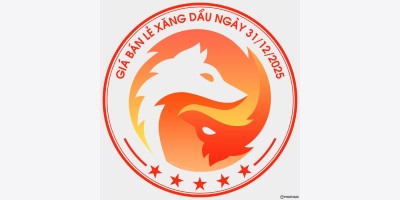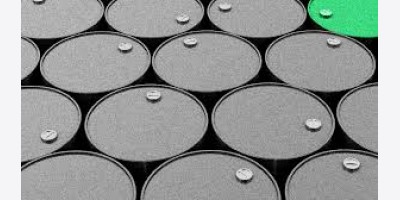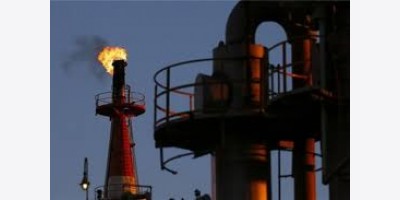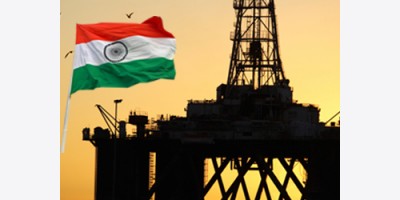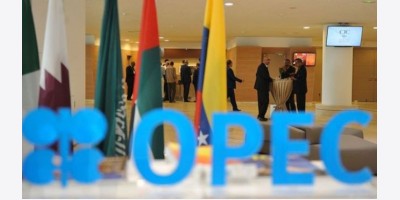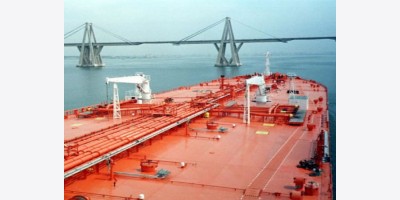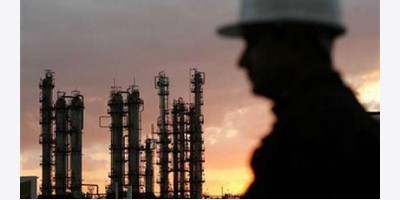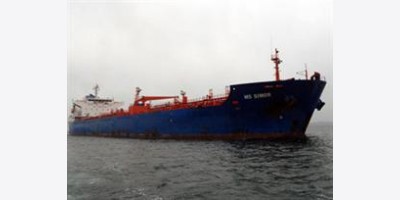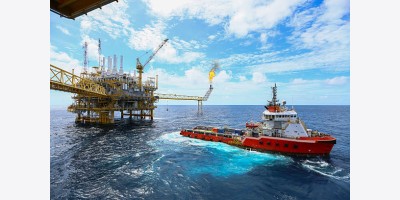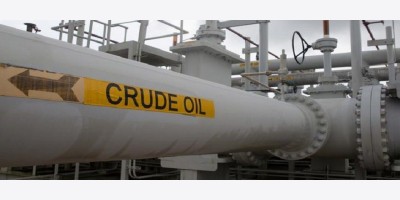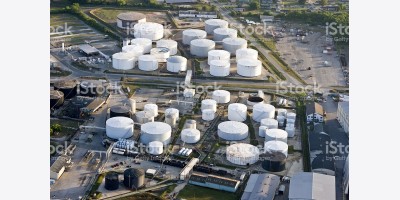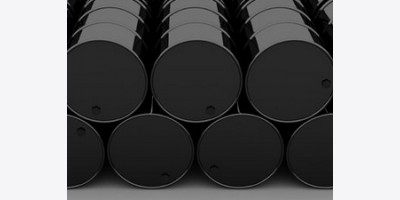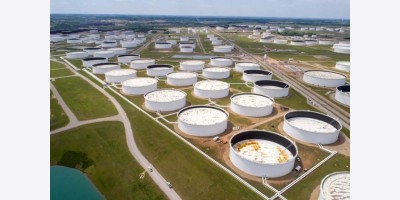Indonesian Minas crude premium to ICE Brent at three-week low
The premium of Indonesian Minas crude to front-month June ICE Brent futures fell to a three-week low of 96 cents/barrel Friday after offers from Chinaoil in the Platts Market On Close assessment process failed to elicit buying interest.
Minas — also known as Sumatran Light — was assessed at $109.29/b, down $2.33/b from Wednesday when it was at a $3.35/b premium to June ICE Brent futures. There was no assessment Thursday due to a holiday in Singapore. The premium was last lower on April 9, when it was assessed at minus $2.45/b. Minas, which has a gravity of 35.3 API and a 0.09% sulfur content, is typically used as a direct-burning crude by Japanese utilities for thermal power generation.
During the MOC process Friday, Chinaoil was seen offering a 25,000 barrel Minas partial for June loading, but was left standing at the 0830 GMT close. Trading sources said overall demand for medium sweet Indonesian grades, such as Minas, has been weak due to lower requirement from Japanese utilities and the availability of alternative grades from Vietnam.
“Japanese demand is still weak. There is no interest from them [for Indonesian burning crude grades],” said a sweet crude trader. Minas is fuel oil-rich (58%) and yields a fair amount of gasoil (19.2%) and kerosene (12.4%). It also yields 9.4% naphtha.
The Minas field, located on the eastern coast of Sumatra in the South Sumatra basin, produces around 150,000-160,000 b/d, according to market sources.
Mexico kicks off exports of light crudes to Asia, USWC, Europe
Petroleos Mexicanos Internacional (PMI), the export arm of Mexico’s state oil company Pemex, began exports of two of its lighter, sweeter grades of crude in the first quarter of 2014 to regions it had not previously sent the oil.
Pemex announced the new export destinations on its website in early January. Pemex made the move in an attempt to increase and diversify the export markets for its crudes, the Mexican state oil company had publicly stated on its website.
Reduced demand for Pemex’s lighter, sweeter grades Olmeca and Isthmus from the US Gulf Coast due to increased domestic production means the US Gulf refiners have sought less of the Mexican grades.
Pemex sells its three grades of crude (Maya, Olmeca and Isthmus) through long-term contracts that are based on similar grades of crude and fuel oil assessments. The formula for Olmeca crude to Europe will consist of the price of Dated Brent as assessed by Platts and the factor or constant that PMI assigns in the first half of the month for cargoes loading in the following month.
The K factor for Olmeca for loading to Europe in January is minus $1.00/b to Dated Brent, according to the PMI website. Olmeca has a gravity of 39.3 API and 0.8% sulfur. Since exports of Olmeca began in 1989, the exclusive market has been the US Gulf Coast refining complex, with smaller shipments less frequently sent to the Dominican Republic, according to a Pemex press release published in late March.
In addition, in Q1 2014 PMI began to export Isthmus crude to the US West Coast. The formula for that region is as follows: 0.40 (West Texas Sour + Light Louisiana Sweet) + 0.20 (Dated Brent) +/- the K factor or constant.
PMI will use the WTS, LLS and Dated Brent prices as published by Platts. Japan’s Cosmo Oil loaded a 1 million-barrel cargo of Isthmus crude from Mexico’s west coast in late February. This is the first time crude has loaded from the west coast of Mexico in many years.
“There were exports from Mexico to Japan some 10 years ago,” one market source said. Exports from Salina Cruz were halted in January 2008 when Mexico loaded its last cargo of Maya crude, and shipped it to Valero in California.
Saudi Arabian Oil Co., the world’s largest crude exporter, raised differentials used in determining its official selling prices for all crude grades to customers in the U.S. by 80 cents a barrel each and increased levels for its two lightest blends to buyers in Asia for June.
The state-owned producer, known as Saudi Aramco, boosted the June premium for Arab Medium for U.S. buyers to $1 a barrel more than the Argus Sour Crude Index, from 20 cents over the benchmark for May, the company said today in an e-mailed statement. The premium will be the highest for the blend since April 2009, according to data compiled by Bloomberg.
Saudi Aramco widened the discount for the same grade to be shipped to buyers in Asia next month by 40 cents a barrel, to 55 cents less than the average of Oman and Dubai grades, the Gulf benchmarks. The company raised June premiums for its Super and Extra Light grades to buyers in Asia.
Persian Gulf oil producers such as Saudi Arabia sell most of their crude under long-term contracts to refiners. Most of the region’s state oil companies price their oil at a premium or discount to a benchmark.
The following table gives differentials for the regions into which Aramco sells in relation to benchmark prices, the month-on-month change and the degrees of gravity as defined by the American Petroleum Institute. Prices are in U.S. dollars per barrel.
U.S.
Variety API June May Change
Extra Light 38.5 +4.90 +4.10 +0.80
Arab Light 32.5 +3.25 +2.45 +0.80
Arab Medium 31 +1.00 +0.20 +0.80
Arab Heavy 27 -0.55 -1.35 +0.80
----------------------------------------------------
Prices for customers in the U.S. are expressed as a differentialto the Argus Sour Crude Index published by Argus Media Ltd.
Asia
Variety API June May Change
Super Light 50.6 +6.45 +6.15 +0.30
Extra Light 38.5 +4.00 +3.90 +0.10
Arab Light 32.5 +1.65 +1.85 -0.20
Arab Medium 31 -0.55 -0.15 -0.40
Arab Heavy 27 -3.55 -2.90 -0.65
-----------------------------------------------------
Prices for customers in Asia are expressed as a differential tothe average of Oman and Dubai grades, the two Arabian Gulfbenchmarks used by Asian oil traders. The Dubai and Oman priceassessments are published by Platts, the energy-informationdivision of McGraw-Hill Cos.
Northwestern Europe
Variety API June May Change
Extra Light 38.5 -0.45 -0.95 +0.50
Arab Light 32.5 -2.45 -2.35 -0.10
Arab Medium 31 -4.40 -4.00 -0.40
Arab Heavy 27 -6.15 -5.55 -0.60
-----------------------------------------------------
Mediterranean
Variety API June May Change
Extra Light 38.5 +0.60 +0.70 -0.10
Arab Light 32.5 -1.85 -1.85 00.00
Arab Medium 31 -3.80 -3.55 -0.25
Arab Heavy 27 -6.25 -5.75 -0.50
------------------------------------------------------
Prices for Northwest European and Mediterranean customers areexpressed as a differential to the Brent weighted average postedby Intercontinental Exchange, free on board Ras Tanura.
Chevron Corp. (CVX) Chairman and Chief Executive Officer John Watson’s goal of breaking a production record three years from now just got harder to reach.
After spending more than $100 million a day on average during the first three months of the year on new oil wells and other projects, Chevron posted its lowest first-quarter crude and natural gas output since 2006 today. The company pumped the equivalent of 2.59 million barrels a day during the period, 1 percent below the average estimate of three analysts in a Bloomberg survey.
The output disappointment comes less than two months after Watson scaled back his 2017 output target to 3.1 million barrels a day from 3.3 million amid low gas prices that stalled some drilling and scant new discoveries. For Chevron, the world’s third-largest energy company by market value, production in the era after its 2001 takeover of Texaco Inc. peaked at 2.78 million a day in 2010.
“They are having to battle quite hard to get bottom-line production growing,” Stephen Clark, who helps manage $305 billion, including Chevron shares, at Standard Life Investments in Boston, said in a telephone interview today. “The sheer size of some of the projects is an issue.”
Watson cited winter weather in Kazakhstan, the source of one in every eight barrels Chevron pumps worldwide, and a storm in Thailand for the production decline. “We continue to advance our key development projects” that will begin boosting output next year, he said in a statement today.
The Chevron-operated $10 billion Angola LNG complex in Africa that chills gas for shipment to overseas markets has been shut since a pipe failure in mid-April, Chief Financial Officer Pat Yarrington said during a conference call today.
An internal investigation into the incident should be concluded in a matter of days, she said. Yarrington didn’t provide an expected restart date, though she said the outage will have a negative impact on Chevron’s overall production.
Watson’s 2017 goal “still seems viable because they have a lot of big projects coming on,” said Stewart Glickman, an equity analyst at S&P Capital IQ in New York who rates Chevron a buy and doesn’t own any shares. New contributions to output will include fields beneath the Gulf of Mexico and off the Australian coast, he said in an interview today.
First-quarter net income was $4.51 billion, or $2.36 a share, compared with $6.18 billion, or $3.18, a year earlier, San Ramon, California-based Chevron said in the statement. Sales fell 6.1 percent to $50.98 billion. The company increased capital spending 5.6 percent to $9.4 billion during the quarter.
Chevron is among international energy explorers caught in the middle of an intensifying row between the U.S. and its European allies on one side, and Russian President Vladimir Putin on the other. Putin put foreign oil companies on the spot on April 29 when he said they may be shut out of his country if their governments continue to ratchet up sanctions against Russian nationals and institutions.
Chevron and its partners are in the midst of a $5.4 billion expansion of a pipeline that carries oil across Russia’s Caucasus region from fields in neighboring Kazakhstan that account for 12 percent of the company’s global supplies.
Watson is spending almost $40 billion this year to drill for new discoveries and transport oil, gas and fuels such as diesel to markets. In tandem with exploration forays that span the globe from Argentina to China, Watson is overseeing $10 billion in asset sales to narrow the company’s focus on its highest-profit projects.
Brent crude futures, the benchmark for more than half the world’s oil, declined by 4.2 percent to an average of $107.92 a barrel during the quarter, according to data compiled by Bloomberg. U.S. gas prices climbed 35 percent to average $4.712 per million British thermal units during that period.
Chevron dropped 0.2 percent to $124.72 at the close in New York.
Exxon Mobil Corp. is the world’s largest energy company by market value, followed by Royal Dutch Shell (RDSA) Plc.
To contact the reporter on this story: Joe Carroll in Chicago at jcarroll8@bloomberg.net
To contact the editors responsible for this story: Susan Warren at susanwarren@bloomberg.net Jasmina Kelemen
U.S. Announces First Superstorm-Related Oil Reserve
The U.S. Department of Energy announced on May 2 that it plans to build an oil storage facility in the northeast to prepare for future emergencies. The storage reserve will hold approximately 1 million barrels of gasoline, and DOE estimates it will cost $215 million to build.
The decision to build gasoline storage infrastructure is part of the government’s response to the widespread damage caused by 2012’s Hurricane Sandy. In the super storm’s aftermath, people in New Jersey and New York suffered through periods of blackouts and gasoline shortages. Some gas stations had no supplies for 30 days and others experienced long lines.
The new reserve, to be built in the New York Harbor area, will be tapped if another disaster disrupts regular supplies. The Obama administration said they see it as the first of several oil reserves that will be constructed around the country in order to plan for future extreme weather events, believed to caused by climate change.
“In addition to our mitigation and international efforts, the president’s Climate Action Plan calls on us to take measures today in order to better prepare for the effects of climate change we already see occurring here at home,” Secretary of Energy Ernest Moniz said in a statement.
DOE’s action was prompted in part by pressure from New York’s U.S. senator, Chuck Schumer (D), who urged DOE to find ways to avoid another scenario in which an extreme weather event causes fuel outages.
The U.S. has managed a national strategic petroleum reserve (SPR) since the late 1970s, after the 1973 oil embargo by Arab countries. The SPR holds around 700 million barrels of oil in salt caverns in Texas and Louisiana. Fuel from the SPR has been deployed only three times by presidents in the past – during the 1991 Persian Gulf War, during Hurricane Katrina in 2005 and during the Arab Spring in 2011.
By James Burgess of OIlprice.com
China -- one of the few countries to invest in Iran despite international sanctions against it over its nuclear program -- has had its contract to develop Iran’s Azadegan oil field terminated.
On April 29, the National Iranian Oil Co.’s legal department informed state-run China National Petroleum Corporation (CNPC), China's biggest oil and natural gas company, that Iranian Oil Minister Bijan Namdar Zanganeh had issued a decree canceling its contract to develop North Azadegan, citing unacceptable delays.
In February, Zanganeh had voiced his ministry’s dissatisfaction over CNPC’s slow pace in developing Azadegan and gave the company three months to meet its obligations or face expulsion from the project. On March 12, Zanganeh said, "CNPC was supposed to drill 185 wells at the first phase of the field's development plan, but so far only seven wells have been drilled."
The cancellation was preceded by a 90-day warning to CNPC from Iran’s Ministry of Oil, and repeated written and verbal warnings.
Iranian Gas Export Co. manager Rokneddin Javadi said, "The contract stipulates that CNPC had to drill 185 holes in the North Azadegan oil field. However, the company didn’t manage to fulfill its obligations in time; that’s why we have notified it that we are tearing up the contract."
When discovered in 1999, Azadegan (Majnoon), a joint field between Iran and Iraq near the Iraqi border, was Iran's biggest oil discovery in three decades, with 26 billion barrels of proven crude oil reserves in Iran’s sector. But the field’s geologic formation was complex, complicating its development.
China, seeking overseas energy assets to fuel its booming economy, successfully bid for Azadegan, ignoring U.S. sanctions. Japan's Inpex carried out initial exploratory studies but was unwilling to bid on the field, leading Iran to sign the $2.5 billion contract with CNPC, which was to pay 90 percent of Azadegan’s development costs. Iran had earlier invested in the field, but was unable to raise production beyond 25,000 barrels of oil per day (bpd).
CNPC was contracted to bring North Azadegan online in a two-phase development, with ultimate total production estimated at 150,000 bpd. Following the imposition of U.S.-led sanctions during the administration of then President Mahmoud Ahmadinejad, CNPC and other Chinese firms -- including state-owned Sinopec and CNOC -- signed $40 billion worth of oil and gas contracts with Iran.
By 2010, China’s global energy strategy had shifted, however, and Beijing instructed Chinese energy companies to slow or stop work in Iran, because it wanted to strengthen ties to the U.S. energy sector and feared close relations with Iran could put those plans at risk.
Another factor in Beijing’s decision might have been the growing effectiveness of international sanctions on Iran’s energy sector. As the U.S. Energy Information Administration put it, “International sanctions are redefining the Iranian energy sector, and the lack of foreign investment and technology is affecting the sector profoundly… International sanctions enacted in 2011 and 2012 have stymied progress across Iran's energy sector, especially affecting upstream investment in both oil and natural gas projects.”
Tough U.S. and EU sanctions have led to several cancellations of Iranian upstream projects and resulted in declining oil production capacity. Sanctions have also impeded Iran’s import of refined products, effectively reshaping the country’s midstream sector and forcing Iran to become self-sufficient.
It is unclear what impact Iran’s termination of CNPC’s Azadegan contract will have on future Sino-Iranian bilateral trade. According to the World Bank, China is Iran's largest trading partner and biggest oil importer. In January, the Chinese ambassador to Tehran announced that the value of trade between Iran and China stood at $31 billion in the first 10 months of 2013. In February, Iranian Finance and Economic Affairs Minister Ali Tayyebnia and Chinese Commerce Minister Gao Hucheng signed an agreement finalizing a roadmap to double bilateral trade by 2017.
Recent progress in Western talks with Iran over its nuclear program could result in a qualitative further easing of international sanctions, and raise the likelihood of other foreign energy companies taking an interest in North Azadegen.
By John Daly of Oilprice.com
Weakening Russian Energy Sector May Not Support Geopolitical Ambitions
The Russian economy may not be able to finance the Kremlin's ambitions in Eastern Europe for much longer because the country's oil and gas output is no longer a strong support of growth.
Russian Energy Minister Alexander Novak said on May 2 that gas supplies through Ukraine might be severed unless Kiev pays in advance for its June deliveries.
Russian energy company Gazprom cut gas supplies through Ukraine in 2009 because of contractual disputes. The deal that ended the impasse left Kiev with some of the highest gas debt obligations in the region. Now Russia says Kiev owes more than $11 billion for unused gas last year, a debt Ukraine's energy company, Naftogaz, disputes.
Russia meets about a quarter of European natural gas needs, most of it via a Soviet-era pipeline network in Ukraine. Overall, however, Russia's gas output is in decline. Gazprom, one of the largest companies in the world, has experienced a production decline of nearly 8 percent, to 40 billion cubic feet per day in March.
Though European countries are the top oil export destination for Russian crude, China is the third biggest importer of Russian oil, suggesting that sector is a bit more diverse than gas. Despite Russia's move to embrace Asian economies, where energy demands are greater, oil output declined 0.2 percent in April, the fourth month in a row for a slip.
The International Monetary Fund (IMF) warned in an April 30 report that Russia's model for economic growth is outdated.
"After almost 15 years of growth based on rising oil prices, successful macroeconomic stabilization policies and increasing use of spare resources, this growth framework has reached its limits," the Fund warned.
Russian President Vladimir Putin has used an economy propped up by his country's energy wealth to support a policy of leash tightening in former Soviet republics like Ukraine and Georgia. With the IMF predicting 0.2 percent growth for Russia, however, his coffers may not be as deep as they were when Moscow laid claim to territory in Georgia in 2008.
The collapse of the Soviet Union in 1991 was brought on in part by military overreach, notably in Afghanistan. Now, Putin's Russia is at risk of mirroring the efforts of his predecessors by embracing a regional policy in the region described by European Energy Commissioner Gunther Oettinger as one of "divide and rule."
Russia is in the midst of its longest streak of declines in oil and gas production in years, its economy is in shambles and its leverage on the international stage is in question. With Putin clinging defiantly to the last threads of the Iron Curtain, it may be more than just Russia's economic model that's outdated.
By Daniel J. Graeber of Oilprice.com
Mexico Proposes Energy Rules To Attract Investment
The Mexican government has released its much-anticipated new rules on its oil sector, putting some meat on the bones of major energy reforms it announced last year. The rules appear to be crafted with the intention of attracting quick investment from international oil companies, according to the Wall Street Journal.
Mexican President Enrique Pena Nieto has made energy reform a centerpiece of his agenda for a reason: Mexico’s economy is dependent on oil. Its oil industry accounted for 32 percent of government revenues in 2013. But in the last decade, production has been on the decline.
Oil production dropped 25 percent between 2004 and 2013. Last year’s average production of 2.9 million barrels per day was the lowest level in over 20 years.
Mexico Total Oil Production
Pena Nieto has blamed the drop on monopoly control by the state-owned oil company, Pemex, which has been faulted for inefficiency and corruption. International oil companies have long only been allowed to be paid for oil services; they could not take ownership of oil fields or derive profits from the reserves.
The government’s energy reform plan, and these latest rules to codify specific changes, will end that model and open up the sector to private companies. Pena Nieto has said he hopes the reforms will boost production to 3.5 million barrels per day by 2025.
But the energy reforms are highly controversial in Mexico, and the political left strongly opposes ending the state’s control over the oil sector. The Partido de la Revolucion Democratica (PRD) is hoping to overturn Pena Nieto’s plans in a referendum planned for 2015.
Alfonso Cauron, the Oscar-winning director of “Gravity,” wrote an open letter to Pena Nieto, which was published in Mexican newspapers, in which he called for a public explanation of how the energy reform will specifically benefit the Mexican people and avoid corruption.
The government is expected to put up blocks for bid, which will be open to the highest bidder. Mexican companies will be given priority over foreign firms if bids are similar.
One of the controversial aspects of the new governance structure is how stringent the local content rules would be. In Brazil, for example, regulators require that international oil companies use 40 percent local content, a limit that oil companies say is holding back investment and raising costs.
While Brazil has enormous reserves in the pre-salt, its production over the last few years has proved disappointing. Mexico decided on a much looser 25 percent local content and, importantly, the proposal allows companies up to a decade to comply.
The latter provision could prove to be significant because it allows international oil companies to move in almost immediately with their existing expertise. If, on the other hand, Mexico had required local content requirements from the start, oil companies would need to take the time to establish relationships with Mexican companies before kicking off new projects. International oil drillers are already exploring and producing in the Gulf of Mexico, so they could theoretically move into Mexican waters without too much difficulty.
Another important reform focuses on royalties; the government has proposed a sliding scale based on the price of oil. For example, companies would pay a 5 percent royalty when prices are $60 per barrel but a 10 percent royalty when prices are $100, according to the WSJ.
Analysts expect the government to offer a range of blocks for development, including deep-water and onshore shale.
The U.S. Energy Information Administration estimates that Mexico has 545 trillion cubic feet of recoverable shale gas, the sixth largest amount in the world. The most promising fields, such as the Burgos Basin, are in the northeast of the country, along the prolific Eagle Ford formation in south Texas.
The international oil industry is chomping at the bit, but the proposal still needs to get through the Mexican Congress. Despite his remarkable success at getting several major bills through already, Pena Nieto’s approval ratings are quite low, just 37 percent in a recent poll. But he has said he remains confident of victory this time again.
By Nick Cunningham of Oilprice.com
Iraq’s oil exports touch 2.512mbpd in April
BAGHDAD: Iraq’s monthly oil exports reached 2.512 million barrels per day (mbpd) in April, an oil ministry spokesman said on Sunday.
Exports rose from 2.139 million bpd in March, ministry spokesman Asim Jihad said, adding that exports from the south of the country, where the bulk of Iraq’s crude is produced and shipped abroad, were 2.509 million bpd - the highest since 2003.
The overall figure is still well below a target of 3.4 million bpd for 2014, which was intended to include 400,000bpd from the country’s autonomous Kurdish region.
Export growth has been held back by repeated sabotage of a northern pipeline and a dispute between the central government and Kurdistan, which has not shipped any oil via state infrastructure for more than one year.
Reuters




